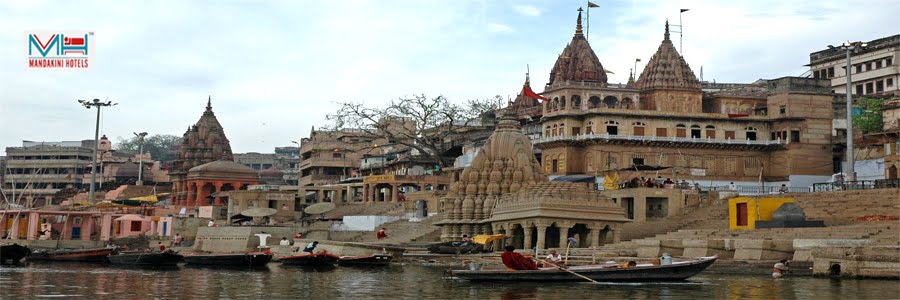The original name of Varanasi was 'Kashi,' derived from the word 'Kasha,' meaning brightness. It is also known variously as Avimuktaka, Anandakanana, Mahasmasana, Surandhana, Brahma Vardha, Sudarsana and Ramya.
How Varanasi Got Its Name
The present name Varanasi has its origin in the two tributaries of the Ganges - Varuna and Asi, which flank its northern and southern borders. Banaras or Benaras, as it is popularly known, is only a corruption of the name Varanasi.
Early History of Varanasi
Historians have now ascertained that the Aryans first settled in the middle Ganges valley and by the second millennium BC, Varanasi became the nucleus of Aryan religion and philosophy. The city also flourished as a commercial and industrial center famous for its muslin and silk fabrics, ivory works, perfumery and sculptures.
In the 6th century BC, Varanasi became the capital of the kingdom of Kashi. During this time Lord Buddha delivered his first sermon at Sarnath, just 10 km away from Varanasi. Being a center of religious, educational, cultural and artistic activities, Kashi drew many learned men from around the world; the celebrated Chinese traveler Hsüan Tsang, is one of them, who visited India around AD 635.
Varanasi Under the Muslims
From 1194, Varanasi went into a destructive phase for three centuries under the Muslim rule. The temples were destroyed and the scholars had to leave. In the 16th century, with the tolerant emperor Akbar's accession to the Mughal throne, some religious respite was restored to the city. All that disappeared again in the late 17th century when the tyrannical Mughal ruler Aurangzeb came to power.
Recent History
The 18th century again brought back the lost glory to Varanasi. It became an independent kingdom, with Ramnagar as its capital, when the British declared it a new Indian state in 1910. After India's independence in 1947, Varanasi became part of the state of Uttar
Pradesh.
The city of Varanasi is located in the middle Ganges valley of North India, in the Eastern part of the state of Uttar Pradesh, along the left crescent-shaped bank of the Ganges river. It has the headquarters of Varanasi district. The "Varanasi Urban Agglomeration" — an agglomeration of seven urban sub-units — covers an area of 112.26 km 2 (approximately 43 mi²).[21] The urban agglomeration is stretched between 82° 56’E - 83° 03’E and 25° 14’N - 25° 23.5’N.[21] Being located in the Indo-Gangetic Plains of North India, the land is very fertile because low level floods in the Ganges continually replenish the soil.[citation needed]
On a local level, Varanasi is located on a higher ground between rivers Ganges and Varuna, the mean elevation being 80.71 m.[22] As a result of absence of tributaries and canals, the main land is continuous and relatively dry. In ancient times, this geographic situation must have been highly favourable for forming settlements. But it is difficult to ascertain the original geography of Varanasi because the city's current location is not exactly the same as the one described in some old texts.
Varanasi is often said to be located between two confluences: one of the Ganges and Varuna, and other of the Ganges and Assi, (Assi having always been a rivulet rather than a river.) The distance between these two confluences is around 2.5 miles (4.0 km), and religious Hindus regard a round trip between these two places—a Pancha-kroshi Yatra (a five mile (8 km) journey) ending with a visit to a Sakshi Vinayak Temple as a holy ritual.
